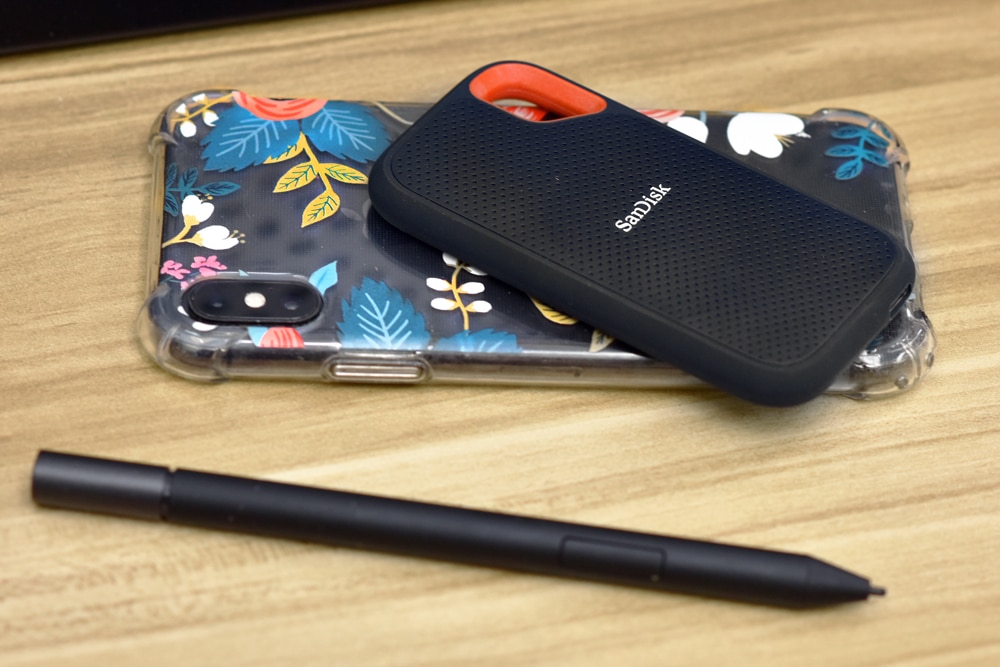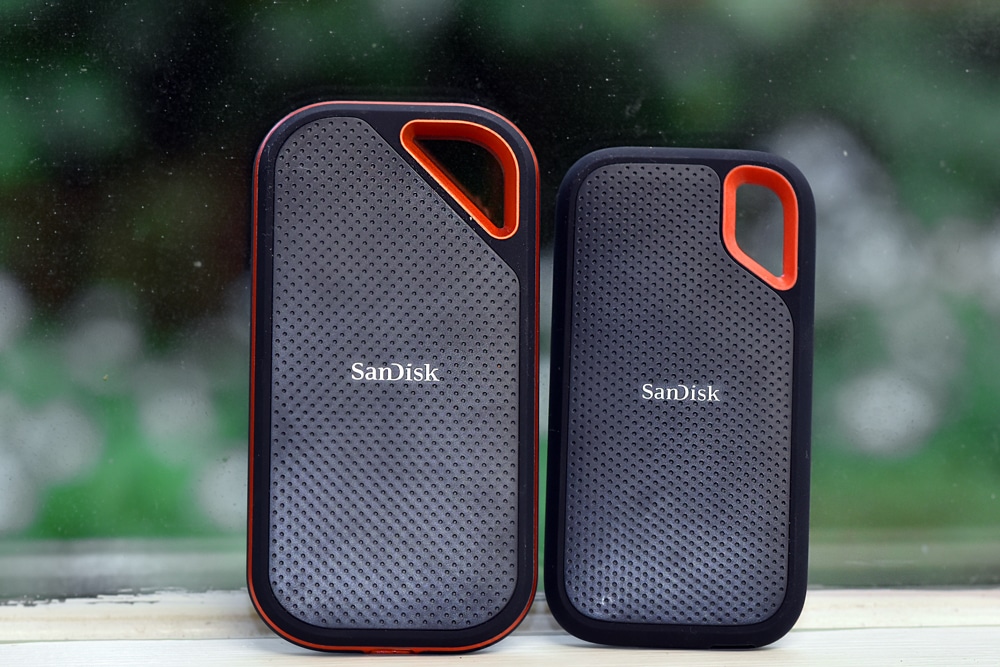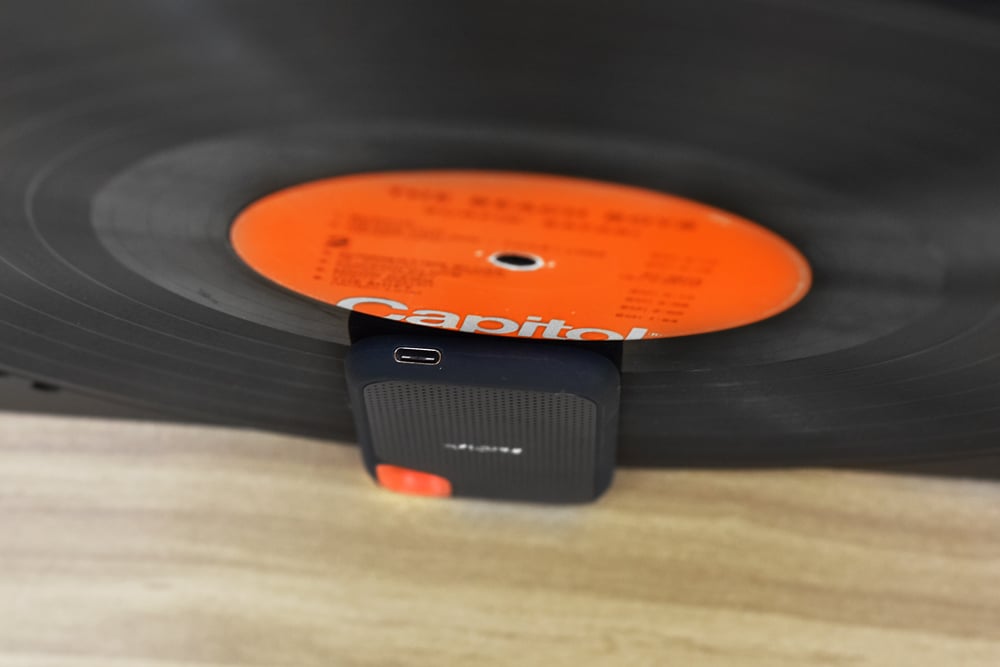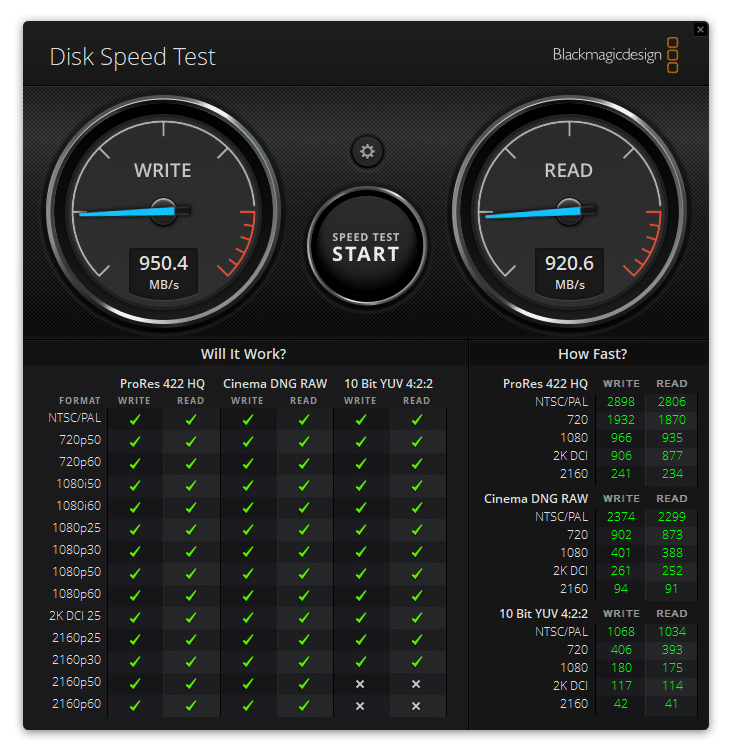The newest version of the SanDisk Extreme Portable SSD V2 has been launched today, doubling the speed of the last-gen SATA model due to its newly equipped NVMe technology and USB 3.2 Type-C support. This mid-level portable drive is ideal for design professionals who need a storage solution that can handle directly editing high-res photos and videos while in the field. It’s also a viable device for adding extra gaming storage on newer PCs or game consoles as well as an option for those who simply need a speedy offline alternative to the cloud.

Though physically small, the SanDisk Extreme Portable SSD is a rugged device and comes with an IP55 rating, the International Protection Rating system that classifies degrees of protection against elements that might intrude into the drive. The specific IP55 rating of the SanDisk drive means that offers protection against dust and potential liquid damage such as the rain and accidental spills. The SSD can also survive drops up to 2 meters. All of these are must-haves for those working outside or those on the go who simply always have the portable drive on them.
Performance-wise, SanDisk quotes the Extreme with speeds up to 1,050MB/s read and 1,000 MB/s write (compared to the previous iteration’s 550MB/s), which is more or less the standard for all mid-level portable NVMe drives we’ve seen so far. Users also have some peace of mind as far as security is concerned with the option to password-protect their files and leverage the built-in 256-bit AES hardware encryption.
Backed by a 5-year warranty (up from 3 years in the prior version), the SanDisk Extreme Portable SSD V2 goes for roughly $100 (480GB) and $160 (1TB), which will be available at launch, while the 2TB ($330) model will be available later in Q4. We will be looking at the 1TB drive model for this review. Launched in parallel SanDisk also launched the Extreme Pro Portable SSD V2 that we have reviewed separately.
SanDisk Extreme Portable SSD V2 Specifications
| Available Capacities | 2TB, 1TB, 500GB |
| Interface | USB 3.2 Gen2 (10Gb/s); backward compatible with USB 3.2 Gen1 |
| Connection | USB Type-C |
| Dimensions (L x W x H) | 3.96 x 2.06 x 0.35 in. (100.54 mm x 52.42x 8.95 mm) |
| Operating Temperature | 0ºC to 45ºC |
| Storage Temperature | -20ºC to 85ºC |
| Encryption | 256-bit AES Hardware with password protection |
| Format | Preformatted ex-FAT for PC and Mac compatibility; Can be reformatted and repartitioned to user desire |
| Operating Vibration | 5.0gRMS, 10-2000 Hz |
| Inside the box | SanDisk Extreme Portable SSD, USB Type-C to USB Type-C cable, USB Type-C to USB Type-A adapter |
| Warranty | 5-years |
SanDisk Extreme Portable SSD V2 Design and Build
The SanDisk Extreme Portable SSD V2 features the same unique build as the last-gen version: a rugged, silicon enclosure with an ABS plastic lid that features a nice dot-textured pattern and a smooth round edge. At just 0.35 inches thick and under 4 inches long, this portable drive can easily fit into the palm of your hand and in larger pockets if need be.

It also features a good-sized lanyard hole on the upper right of the device. Most camera bags come with lanyards attached, so this is a nice feature for professionals. However, most people usually prefer to keep their portable drive inside a bag or pocket when commuting, but the feature is there if you need it.

The SanDisk Extreme Portable SSD also features a USB bridge that has a water-resistant Type-C connector, though the port does not have or need a cover.
SanDisk Extreme Portable SSD V2 performance
To gauge the performance of the SanDisk Extreme Portable SSD V2, we put it through two tests: Blackmagic software and IOMeter, both on a Lenovo P520. We used an add-on PCIe card based around the ASMedia ASM3242 chipset offering a USB 3.2 2×2 interface. We compared the results with the recently reviewed WD My Passport NVMe SSD and the Samsung T7.
In Blackmagic, the SanDisk Extreme posted 920.6MB/s read and 950.4MB/s write, which was slightly below its quoted speed. In comparison, the My Passport drive hit 878.8MB/s read and 893.3MB/s write while The T7 recorded 894MB/s read and 840MB/s write.

With IOMeter, we measured both 1 and 4 thread, the latter which is a higher load that pushes the drive hard. First up is the 1 thread performance, where the SanDisk performed very well against the other two drives with a leading 921.5MB/s read and 861.4MB/s write. In comparison, the My Passport NVMe drive recorded 810.53MB/s read and 723.8MB/s write for 2MB sequential transfer speeds while the T7 hit 692.1MB/s read and 713.4MB/s write.
In 2MB random, the SanDisk Extreme posted impressive results again, with 853.7MB/s read and 836.2MB/s write. As for the other portable drives, the WD showed 720.35MB/s read and 690.24MB/s write, while the T7 that had 667.6MB/s read and 712.8MB/s write.
Looking at 4K random performance, the SanDisk Extreme hit 5,034 IOPS read and 17,053 IOPS write. The WD portable drive showed 4,330 IOPS read and 18,877 IOPS write while the Samsung T7 hit 4,204 IOPS read and 12,306 IOPS write.
Moving on to 4 threads, the SanDisk Extreme continued its great performance with 1.04GB/s read and 1.02GB/s write for 2MB sequential speeds, which were pretty much on par with the company’s quoted speeds. In comparison, the My Passport NVMe SSD had showed 991.52MB/s read and 939.98MB/s write, while the T7 had 980.5MB/s read and 841.5MB/s write.
With 2MB random performance, the SanDisk hit 1.03GB/s read and 870MB/s write. As for the other drives, the WD saw 985.82MB/s read and 742.67MB/s write, while the T7 hit 978.7MB/s read and 920.0MB/s write. Finally, 4K random the SanDisk hit 18,787 IOPS read and a massive 66,585 IOPS write. In comparison, the My Passport showed 17,616 IOPS read and 39,793 IOPS write while the T7 recorded 17,805 IOPS read and 37,202 IOPS write.
Conclusion
The SanDisk Extreme Portable SSD is an impressive NVMe storage solution meant for designers and prosumers who need a rugged, extremely fast portable drive as well as those who just want an offline alternative backup solution to the Cloud. Based on its performance above and its USB 3.2 gen2 support, the SanDisk drive can also be used an extra storage for gamers. SanDisk’s updated Extreme Portable SSD also features multi-device compatibility, an IP55 rating, AES 256-bit hardware encryption and capacities up to 2TB.
Looking at performance, the drive produced some of the best results we’ve seen from a portable NVMe drive of its class. For 1-thread IOMeter performance, the SanDisk SSD showed leading 921.5MB/s read and 861.4MB/s write during our 2MB sequential test, while the 2MB random test resulted in 853.7MB/s read and 836.2MB/s write. For 4-thread IOMeter performance, the SanDisk portable NVMe SSD showed 2MB sequential speeds of 1.04GB/s read and 1.02GB/s write, while 2MB random performance saw hit 1.03GB/s read and 870MB/s write.
Out with the old (SATA) and in with the new (NVMe), the SanDisk Extreme Portable SSD sets the new standard for mainstream portable drives. As far as pricing goes, the 1TB model is roughly $200 dollars, which pretty much the same price as the Samsung T7. Currently, the WD My Passport NVMe SSD is $50 dollars cheaper for the same capacity, though it is currently on sale and is normally priced at $200. Nonetheless, its highly-compact design, bar-setting performance, and the inline price tag make the SanDisk Extreme Portable SSD is a perfect solution for photographers, videographers and prosumers. That said, for those who need a little more oomph, SanDisk also offers the Extreme Pro V2.




 Amazon
Amazon